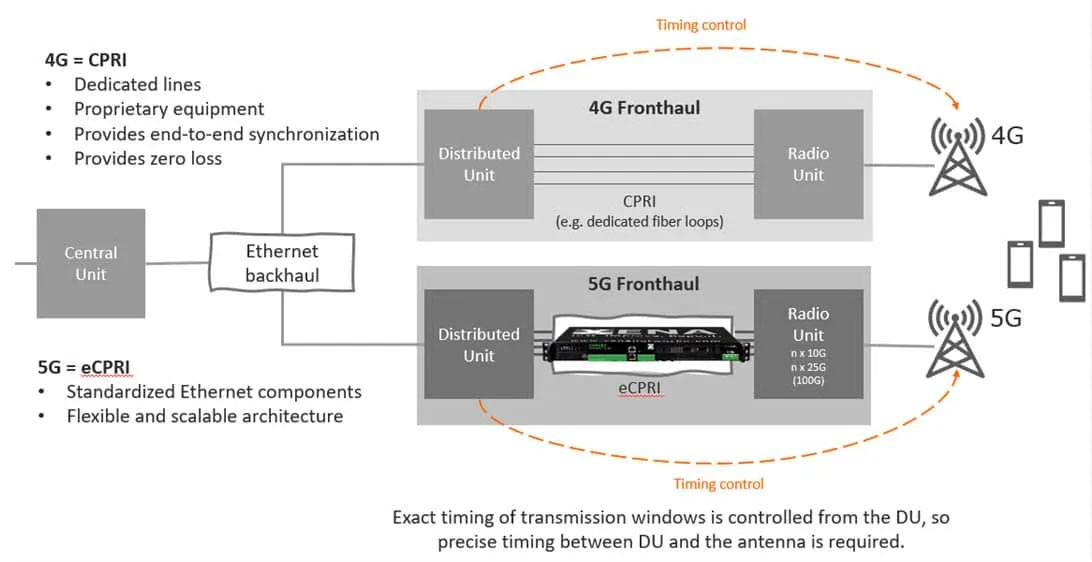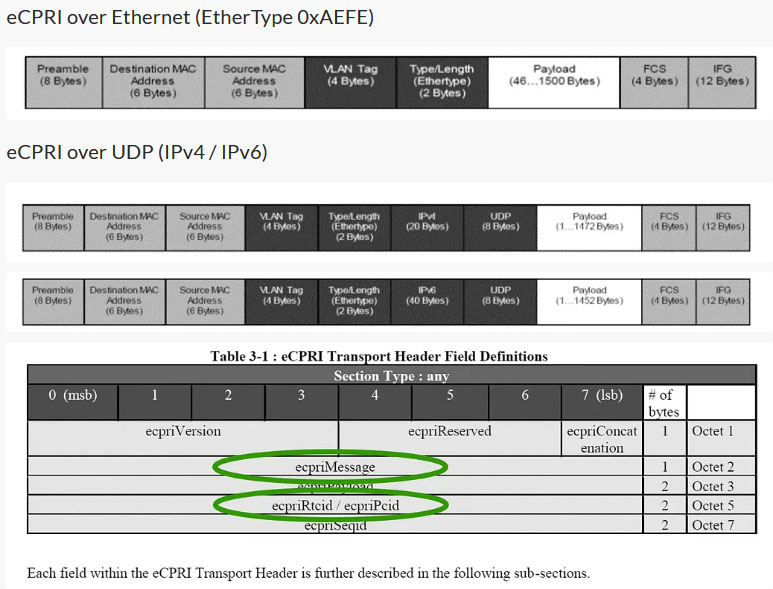Rolling Out eCPRI for 5G applications
Overview Menu
NextGig Systems Overview
eCPRI does not provide end-to-end synchronization or guarantee zero loss. Using Chimera to emulate network impairment is a good solution for testing 5G network performance and robustness under real-world conditions.
Transitioning from CPRI to eCPRI
Upgrading from 4G to 5G means tackling the challenge of transitioning from CPRI (Common Public Radio Interface) to eCPRI (Enhanced Common Public Radio Interface).
eCPRI offers the advantage of using standard “off-the-shelf” Ethernet components, which are considerably cheaper than the proprietary equipment used in 4G. It also creates a more flexible and scalable architecture that supports virtualization options like SDN and NFV. The eCPRI initiative is supported by the O‐RAN alliance, which is supported by most of the biggest NEMs, network operators and telecom companies.
However, unlike CPRI, eCPRI does not provide end-to-end synchronization or guarantee zero loss.
Testing the timing of data traffic as it flows from the Central Units on the backhaul Ethernet to the 5G fronthaul part of the network is therefore critical.
Fronthaul networks consist of the Distributed Units (DU), the Radio Units (RUs) and all the antennas. They can vary in size from just a few kilometers to over 50kms. What’s more, the DUs are responsible for controlling multiple antennas – each with dedicated transmission windows – and these need to be coordinated with adjacent antennas to avoid interference.

As a result, any significant amount of jitter on the eCPRI interface will complicate controlling the antenna from the DU and the loss of data or control frames will impact the experience for users connected to the antennas via mobile devices.
Testing how robust the entire installation prior to rollout is therefore essential.
And in today’s 5G fronthaul networks – where RUs can have 4, 8 or more Ethernet interfaces running at 10G or 25G – a high port density is required on any test setup so all interfaces can be tested simultaneously preferably at wire-speed.
How Chimera makes it easy
A good way to test if the network between the DUs to the RUs can handle latency and jitter is to use an Ethernet impairment solution like Chimera to emulate the fronthaul network in the lab. Chimera has the high port density required for the RUs, plus it can test 5 speeds – 10GE / 25GE / 40GE / 50GE & 100GE – all at full wirespeed.
To test the User and Control plane over an Ethernet network, you first need to identify the flow that you want to impair.
eCPRI can be carried natively over Ethernet with Ethertype = 0xAEFE, or over UDP running either IPv4 or IPv6, where the UDP port depends on the implementation.
Looking into the eCPRI header, you can determine the message type to decide if you want to impair any of the 3 eCPRI messages – “Data Messages”, “Control Messages” or “One-Way delay measurement” – supported by the O-RAN specification.
What to Impair?
- Data messages (msgtype #0)
- Control messages (msgtype #2)
- One-Way Delay Measurement (msgtype #5)

The eCPRI header tells you the message id, so setting up the correct filters in Chimera lets you impair exactly the flow you want to test.
Once you have identified the packet flow you want to impair, you need to decide how to impair it.
This will depend on the application, but the O-RAN specification defines different categories for 5G applications, each with specified min and max latencies. This is easy to test using Chimera if you know the right fronthaul network category.
Once you have verified your application works within the required latency range, you can test its robustness by adding jitter, dropping frames or test what happens in case of packet mis-ordering.
This lets you verify that your application will run over the desired network, plus it helps you pinpoint performance issues impacting your application so you can redesign in order to improve robustness.

